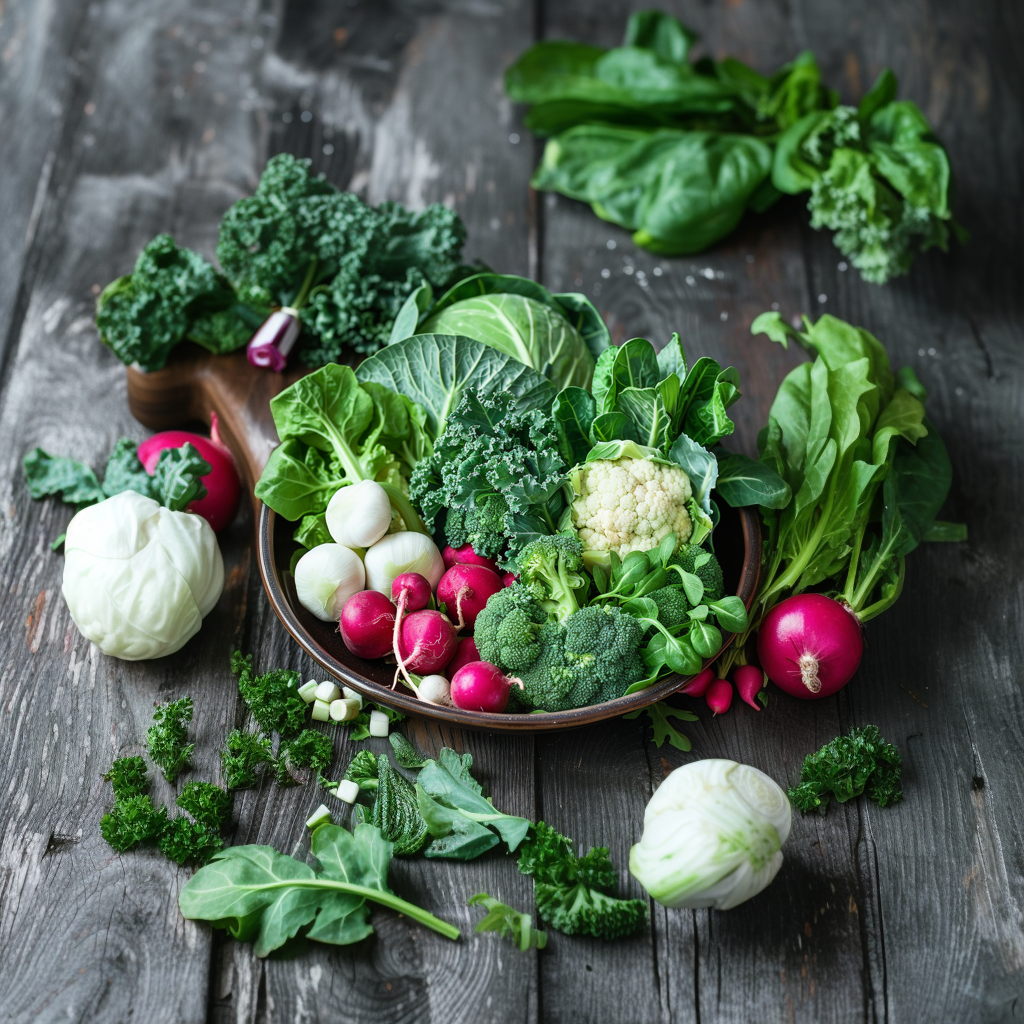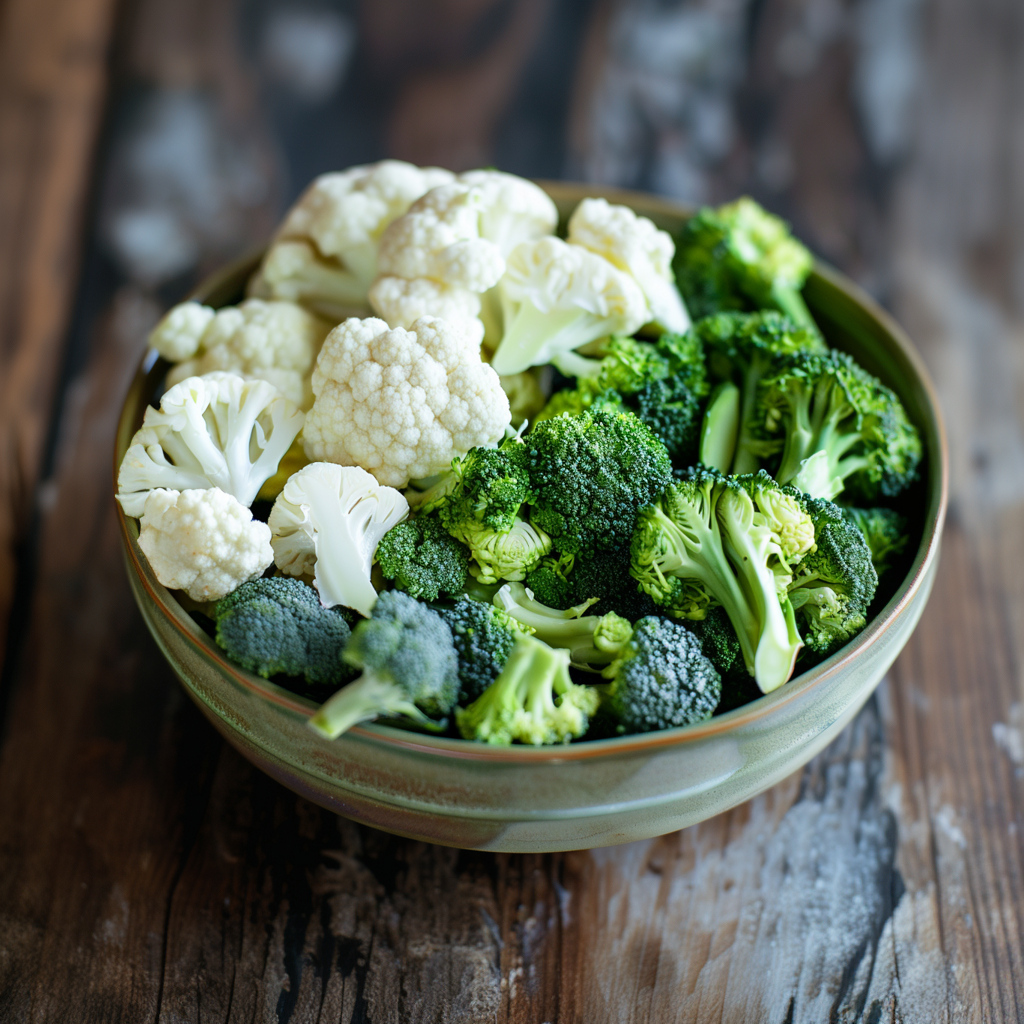If you’ve been looking for ways to boost your health through diet, you’ve likely come across the term “cruciferous vegetables.” These nutrient-packed veggies are a powerhouse addition to any meal plan. Whether you’re a seasoned health enthusiast or just starting your wellness journey, this beginner’s guide to cruciferous vegetables will show you why they deserve a spot on your plate.
What Are Cruciferous Vegetables?
Cruciferous vegetables belong to the Brassicaceae family and are known for their distinctive flavors and health benefits. Popular examples include:
- Broccoli
- Cauliflower
- Kale
- Cabbage
- Brussels Sprouts
- Arugula
- Radishes
- Turnips
These veggies get their name from their cross-shaped flowers (“crucifer” means “cross-bearing”). They’re easy to recognize and even easier to incorporate into your diet.
Nutritional Benefits of Cruciferous Vegetables
Cruciferous vegetables are packed with essential nutrients and compounds that make them a nutritional goldmine:
Low in Calories: Perfect for weight management, cruciferous vegetables offer maximum nutrition with minimal calories.
Rich in Vitamins and Minerals: They’re excellent sources of vitamins C, K, and A, as well as folate and potassium.
High in Fiber: These veggies support digestion and help you feel full longer.
Loaded with Antioxidants: Compounds like sulforaphane and glucosinolates help combat oxidative stress and inflammation.
Health Benefits
Eating cruciferous vegetables regularly can:
Nutrients like vitamin A and antioxidants contribute to radiant skin and strong hair.
Support Heart Health:
- The fiber, potassium, and antioxidants in these veggies promote healthy blood pressure and cholesterol levels.
Enhance Detoxification:
- Cruciferous vegetables contain compounds that aid your liver in detoxifying harmful substances.
Reduce Cancer Risk:
- Studies suggest that the glucosinolates in cruciferous vegetables may reduce the risk of certain cancers.
Boost Immune Function:
- Their high vitamin C content helps keep your immune system strong.
Support Healthy Skin and Hair:
- Nutrients like vitamin A and antioxidants contribute to radiant skin and strong hair.
How to Incorporate Cruciferous Vegetables Into Your Diet
Adding these vegetables to your meals can be both simple and delicious! Here are a few ideas:
Crunch on radishes or pair raw broccoli with hummus for a quick snack.
Roast Them:
- Toss broccoli, cauliflower, or Brussels sprouts with olive oil, salt, and pepper, then roast at 400°F until crispy.
Add to Salads:
- Use arugula or shredded cabbage as a base for salads.
Blend Into Smoothies:
- Add a handful of kale or spinach to your morning smoothie for a nutrient boost.
Make Soups and Stews:
- Cauliflower and broccoli make creamy, satisfying soups when blended.
Enjoy Raw:
- Crunch on radishes or pair raw broccoli with hummus for a quick snack.
Cruciferous Vegetables Tips for Beginners
- Start Small: If you’re new to these vegetables, introduce them gradually to avoid overwhelming your palate or digestive system.
- Experiment with Flavors: Try different spices, herbs, and cooking methods to find what you enjoy most.
- Pair with Healthy Fats: Adding olive oil or avocado can enhance the absorption of fat-soluble vitamins.
- Stay Fresh: To maximize nutrients, consume them fresh or lightly cooked.
Final Thoughts
Cruciferous vegetables are a versatile, nutrient-dense food group that offers a wealth of health benefits. By adding them to your diet, you’re taking a step toward better health and vitality. Start small, experiment with recipes, and enjoy the journey to a healthier you.
Ready to explore the world of cruciferous vegetables? Let us know in the comments which one you’re excited to try first!




